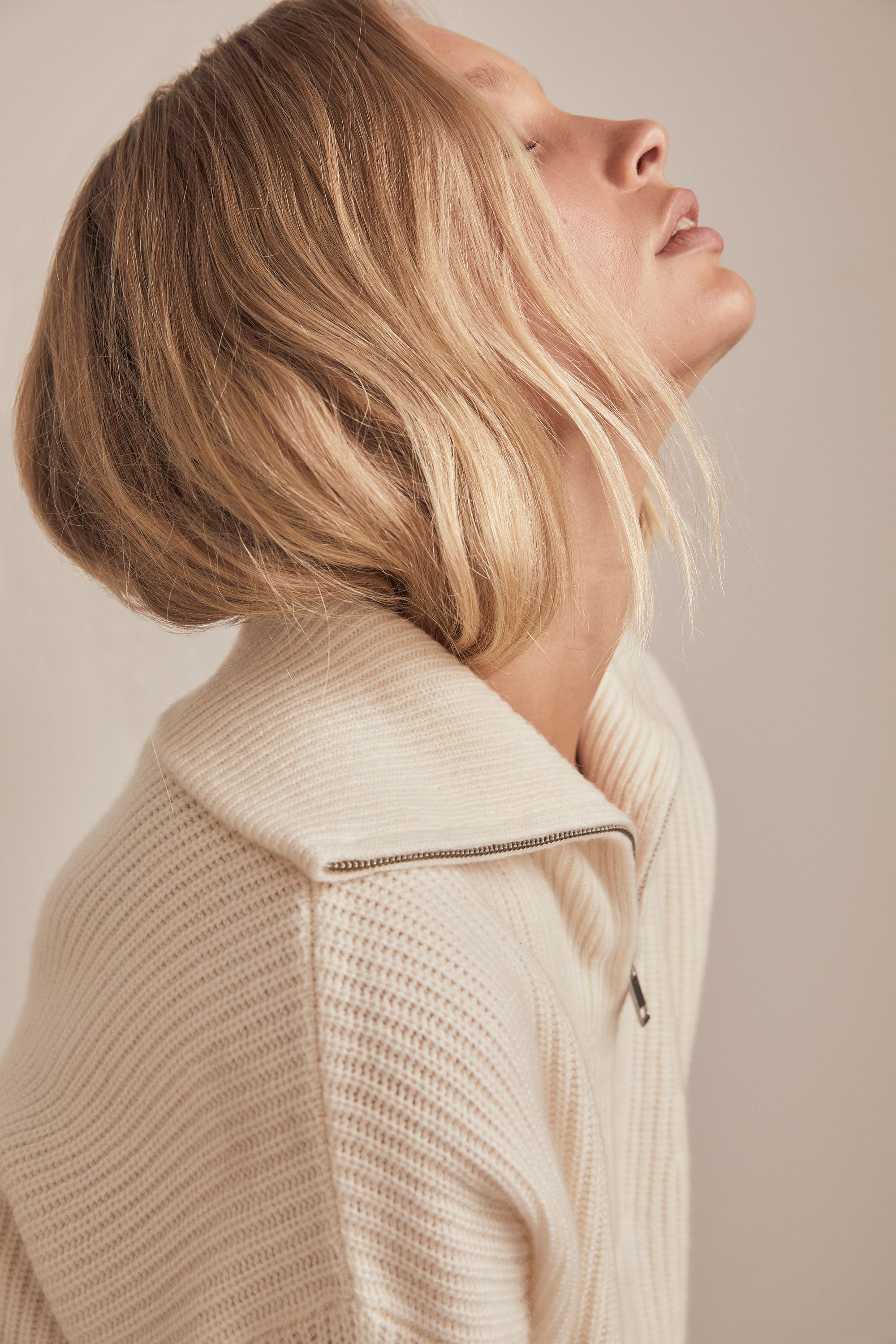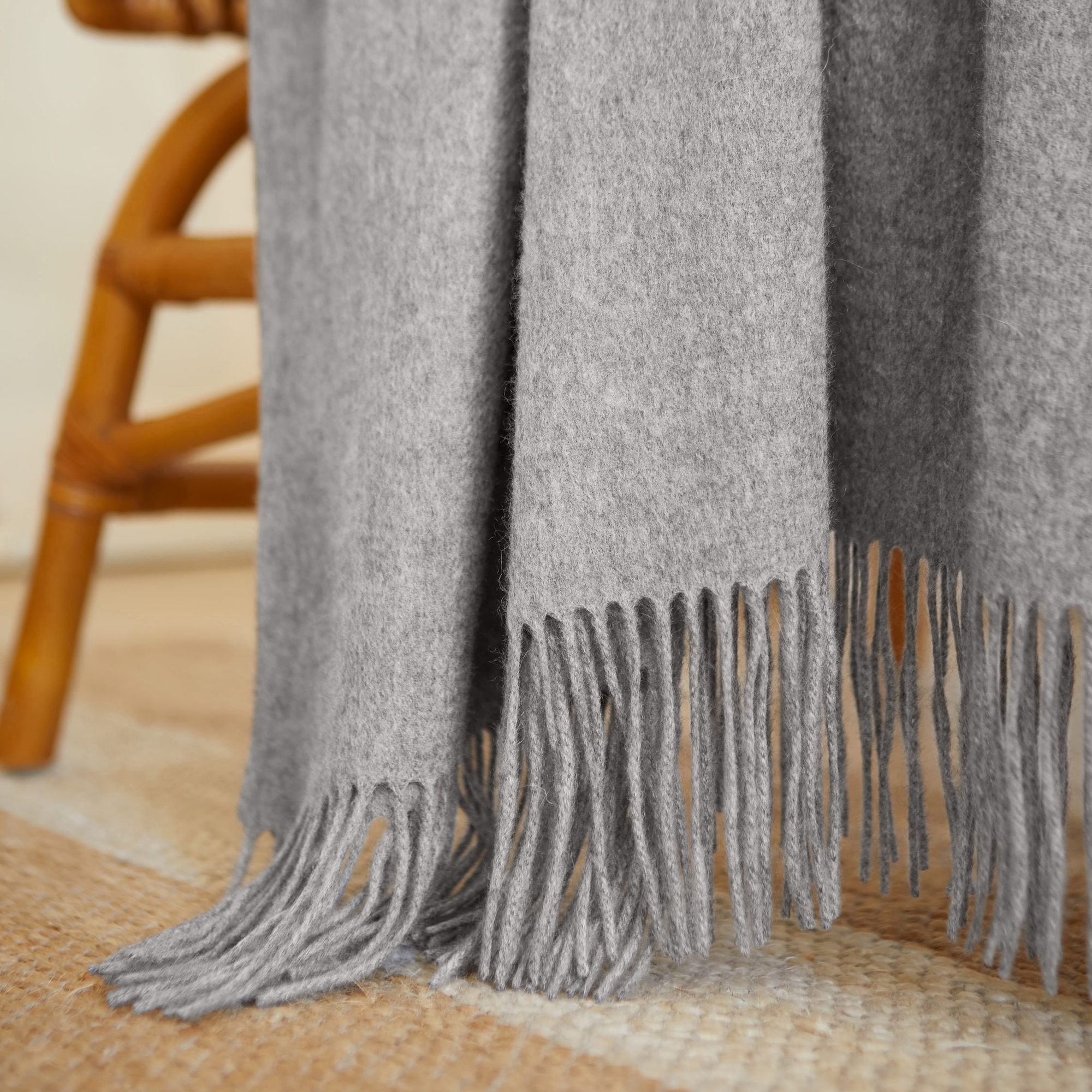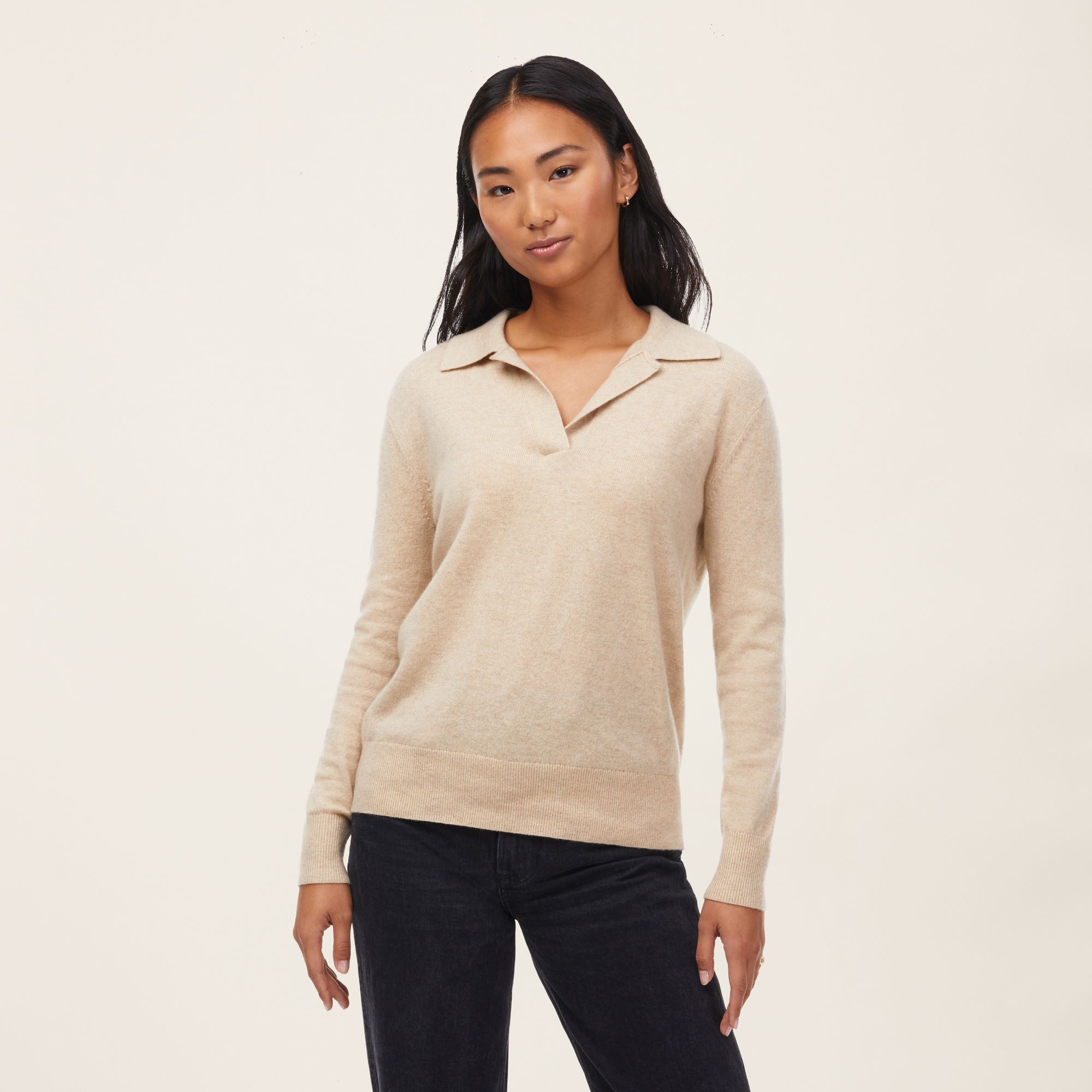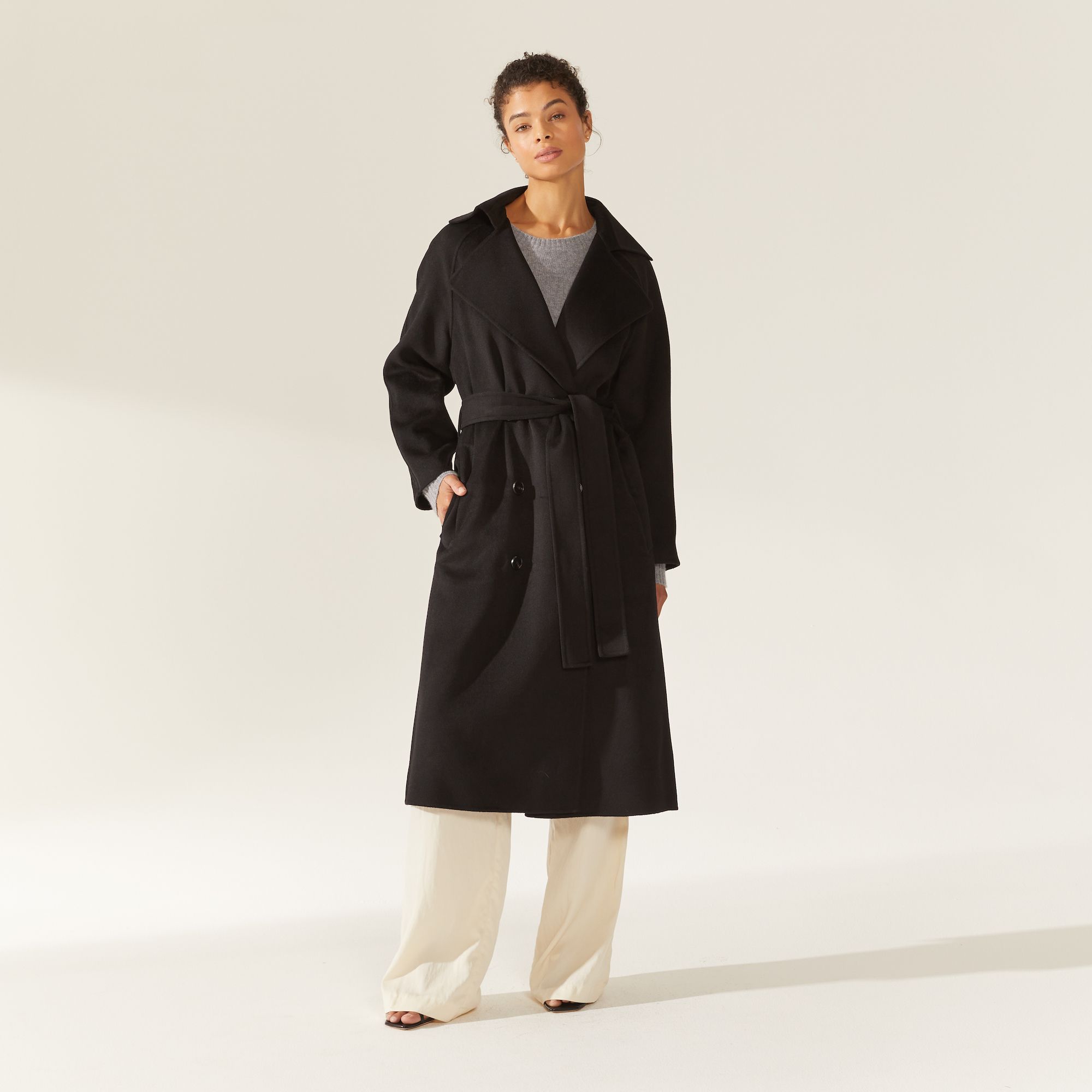When it comes to investment pieces, high quality cashmere is an essential addition to your wardrobe. Through our mission of democratizing access to luxury, we aim to make this famously-soft material more attainable to consumers. In this guide, we'll delve into all things cashmere, from its origins and production methods to how to care for it, and why it typically commands a higher price tag than other fibers.
What is Cashmere?
Cashmere is a type of wool that comes from the undercoat of cashmere goats. These goats are native to the high altitudes of the Himalayas, where the harsh winter conditions lead to the growth of dense hair. The fibers of this hair are longer, finer, and softer than those of sheep's wool, making it one of the most sought-after materials in the world.
Not only is cashmere incredibly soft and warm, it is highly durable - making it a great investment for long-lasting wardrobe pieces. It is also a very breathable material, making it perfect for layering in colder weather.

Where Does Cashmere Come From?
Cashmere is originally from the Kashmir region of India, where it gets its name. Today, it is primarily produced in mountainous regions in other countries with similar climates, such as China, Mongolia, and Afghanistan.
The process of producing cashmere begins in the spring, when the goats naturally shed their winter coats. The undercoat is carefully combed out by hand, a time-consuming process that ensures the highest quality of raw materials. The fibers are then sorted into grades based on their condition, with Grade A being the finest and softest.
At Italic, we are committed to sourcing our cashmere from sustainable and ethical sources, ensuring that the production process is as humane and environmentally friendly as possible.


What Makes Cashmere Special?


Breathability
One of the key qualities of cashmere is its breathability. Unlike synthetic materials, which can trap heat and cause discomfort, cashmere’s breathable nature helps to keep you warm in the winter and cool in the summer. This makes it a versatile material for all seasons.
Softness
As mentioned earlier, cashmere is renowned for its softness. Its fibers are finer and smoother than regular wool, making it incredibly comfortable to wear. In fact, cashmere is often cited as one of the softest materials in the world.
Longevity
In addition to its breathability and softness, cashmere is also highly durable. Its fibers are strong and resistant to wear and tear, meaning that a high-quality cashmere garment can last for many years with proper care.
Is All Cashmere the Same?
Not all cashmere is created equal. The quality of cashmere is determined by a number of factors, including the fiber length and fineness. Longer fibers are generally considered to be of higher quality because they are stronger and less prone to pilling. Fineness is another important factor, as finer fibers are softer and more comfortable to wear. Finally, density is also important, as densely-woven knits provide more insulation and warmth.

Grading
Cashmere is typically graded by the fineness of its fibers using a three-tier system: Grade A, Grade B, and Grade C. Grade A is considered to be the finest quality cashmere, with fibers that are 14 microns or finer. Grade B is slightly coarser, with fibers ranging from 18-19 microns, while Grade C is the lowest quality, with fibers that are 30 microns or thicker.
It's worth noting that the finer the fibers, the finer the final product will be. This is why Grade A cashmere is considered the highest quality and is typically more expensive.
To ensure that you are getting the highest quality cashmere, it's important to touch and feel the material. If it stretches and goes back to its natural shape, and is soft and smooth to the touch, it is likely to be Grade A cashmere.
At Italic, we only use Grade A cashmere in our products to ensure that our customers are getting the highest quality materials.
Why Is Cashmere So Expensive?

Cashmere is considered an investment because of its specialized raw materials and meticulously hand-combed production methods, which limit the amount of textiles that can be produced. The limited quantities of this high-quality cashmere make it an exclusive and expensive material. Additionally, cashmere exchanges hands many times among farmers, mills, distributors, and more, each subsequently increasing the price of the material.
Does cheaper cashmere mean worse quality?
Usually, but not always. It is important to note that the price of cashmere is not solely determined by its quality. There are many factors that can contribute to the cost of cashmere, including the origin and production process of the material, the demand for the product, and the overhead costs of the company producing it. Ultimately, cashmere’s association with luxury enables traditional retail consumer brands to play upon consumer interest and ignorance, commanding a significant premium for it.
At Italic, we are able to offer high-quality cashmere at more affordable prices due to our innovative business model. Rather than relying on traditional retail markups, we cut out the middlemen and sell directly to consumers through our online platform. This allows us to offer consumers premium materials at lower prices.
Overall, while cheaper cashmere may not necessarily mean worse quality, it is important to consider all factors when purchasing a cashmere product, including the materials and production processes used, as well as the reputation and values of the company producing it.
How to Care For Cashmere
Taking care of your cashmere garments and accessories is crucial in maintaining their luxurious softness and longevity. Cashmere does not need to be washed as often as other fabrics, as it is naturally odor-resistant and can be refreshed simply by draping it in a well-ventilated space. If the garment is visibly dirty or has a strong odor, it can be washed following the steps below. In general, it is recommended to wash cashmere every few wears or once a season.

Washing Cashmere
Avoid washing your cashmere too frequently. Instead, try spot cleaning or using a fabric freshener to remove any odors or stains.
The best way to wash cashmere is to hand wash it in lukewarm or cold water using a mild detergent. Avoid hot water, as it can shrink the fibers and damage the fabric.
Drying Cashmere
Avoid wringing or twisting the cashmere, as this can stretch and distort the shape of the garment. Instead, gently press out the excess water and lay it flat to dry.
Avoid drying your cashmere in direct sunlight or using a dryer, as heat can cause shrinkage and damage the fibers.

Storing Cashmere
When storing your cashmere, fold it loosely and place it in a drawer or on a shelf. Avoid hanging it, as the weight of the garment can stretch and distort the shape.
To prevent pilling, it is important to handle cashmere gently and avoid wearing it with rough or abrasive surfaces. You can also use a fabric shaver to remove any pills that may form on the surface of the cashmere. Taking proper care of your cashmere garments will help them last longer and maintain their soft, luxurious feel.
If you notice any pills or balls forming on your cashmere, gently remove them using a cashmere comb or by carefully trimming them with scissors.
By following these tips, you can help your cashmere garments maintain their softness and durability for many seasons to come.
Learn more in our dedicated Cashmere Care Guide.